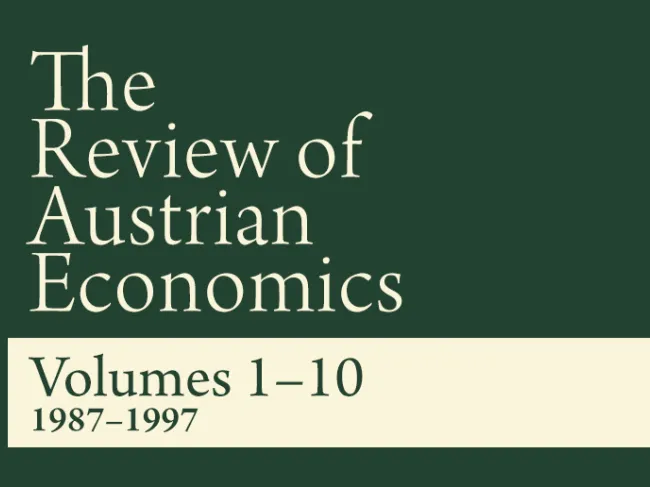Hans-Hermann Hoppe, in his excellent article “How Is Fiat Money Possible? — or, The Devolution of Money and Credit,1 explained that fiat money can come into existence through the progressive degeneration of commodity money substitutes. I would like to suggest an additional scenario by which fiat money can come about, a scenario which may be useful for understanding some events in recent Russian history.
Imagine a community with a barter economy where a group of men are permitted to impose a great deal of violence on their fellow citizens. Let’s call this group the state. The state prints paper tickets denominated in numbers, passes them out to the population, and declares that everyone must hand over a certain amount of these tickets to the state or face a harsh punishment, say, five years in prison. When the state acquires these tickets, it exchanges them for goods and services.
The tickets distributed in this way have some important properties. First, they have an initial use-value for members of the community (excluding members of the state): they can be used as a means of rescuing oneself from physical violence. Second, they are very marketable because they can be distributed in any denomination (divisibility). Third, they are small and do not weigh much (transportability). Fourth, they are universally desirable because no one wants to be in prison.
These properties make the tickets very competitive in the Mengerian process of the origination of money. The state could increase its chances of winning the competition with other monies by restricting the ability of people to contract with competing commodities like gold and silver. This step, however, is not necessary provided the sanctions for not paying the tribute are sufficiently severe and unavoidable.
In other words, fiat money can originate by the Mengerian process of selection, but only if it can be exchanged for specific goods, such as the ability to escape aggressive violence. Thus, governmental taxation provides one mean by which fiat money could come into existence. Indeed, in our scenario, taxation is the essential cause of the money’s origin.
This fiat money is not irredeemable. It is redeemable in a peculiar commodity: an escape from violence. Clearly, this is not money based on mutual confidence and consent, and neither does it conform to Hoppe’s strictures against injustice in the process of money origination.2
It is worth noting that in reality, the nature of the commodity backing is rather indistinct. Enforcement of any decree is never fully guaranteed. Anyone deciding whether to pay or not to pay a tax always takes into account the probability of being punished for the failure to pay. This probability in turn, depends on various factors influencing the efficiency of the government’s machinery of violence.
Reorganizing various policing agencies and tax-collecting departments, anticorruption campaigns, and other political disturbances could considerably change the subjective valuations of this money’s market value. These phenomena, along with inflation, could be an additional source of financial instability.
This scenario may appear to be rather abstract and far from real life. But this appears to me to not be the case. This mental construction is a useful device for interpreting recent events of Russian economic history.
According to a number of Russian economists, the late Soviet economic system might be properly described as an administrative market — a kind of barter economy where not only usual goods and services are marketable, but so are such peculiar items as contents of governmental regulations and planning directives, the opportunity to violate them without penalty, official posts in the state apparatus, and so on.3 Such peculiar commodities might be named administrative goods, because their value for economic actors is rooted in the ability of the state to use violence, and of everyone else to avoid this violence under certain conditions.
The barter character of Soviet economics is synonymous with its nonmonetary nature. There were no media of exchange. The Soviet rubles could in no sense be called money. However, Gregory Gaidar’s reform in 1992 not only abrogated some regulations (the determination of prices in rubles by government), but also monetized the Russian economy. The newly created money was a fiat money backed by administrative goods according to our definition.
The scenario I have described approximates the real process of the creation of fiat money in the Russian economy during the reforms from 1990 to the present. The reform had two major features: the Russian governmental apparatus was completely reorganized, and huge changes were made in tax legislation to make collection easier and more profitable for the state. This combination was probably an important cause of the ensuing financial instability (the value of the fiat money was continually in flux), an instability that was exacerbated by inflationist policies and continuing political uncertainty.
- 1Review of Austrian Economics 7, no. 2 (1994): 49–74.
- 2Hoppe asks, “can fiat money arise as the natural outcome of the interactions between self-interested individuals; or, is it possible to introduce it without violating either principles of justice or economic efficiency?” (p. 49)
- 3See V. Naishul, The Supreme and Last Stage of Socialism (London: Center for Research into Communist Economics, 1991); idem., “Liberalism, Customary Rights and Economic Reforms,” Communist Economies and Economic Transformation 5, no. 1 (1993); idem., “Communism: Death or Transformation?” presented at the Mont Pelerin Society General Meeting (Cannes, 1994); idem., “Perspectives on Economic Reforms in Russia,” Champions of Freedom 21 (Hillsdale, Mich.: Hillsdale College Press, 1994).


